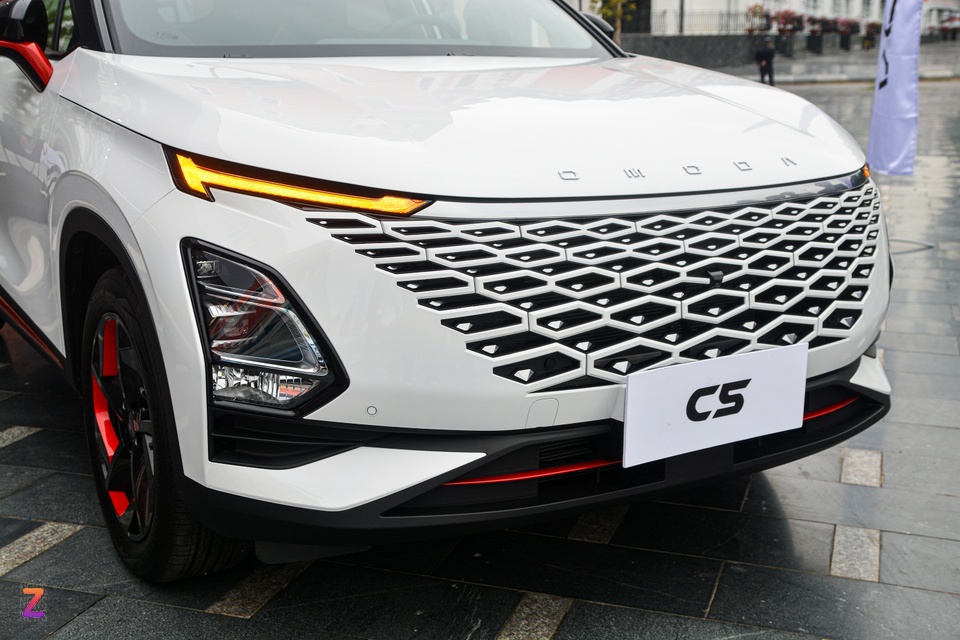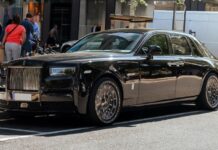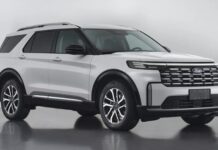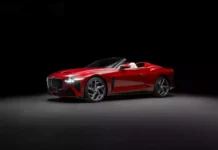
|
After months of market research, Chery – China’s leading automobile exporter – is making its move into Vietnam. Following MG, Wuling, and BYD, Vietnamese customers are likely to welcome two new automotive brands from this conglomerate: Omoda and Jaecoo.
A Shift in Approach?
Among the potential offerings that Chery could introduce to the Vietnamese market, the automotive group from China has hinted at the Omoda E5, known as the electric version of the Omoda C5 SUV. The Omoda C5 was previously brought to Hanoi last year and is currently available in several Southeast Asian markets.
|
|
|
Omoda E5 will be one of the first models introduced by Chery in Vietnam. |
The Omoda E5 boasts dimensions of 4,424 mm in length, 1,830 mm in width, and 1,588 mm in height, with a wheelbase of 2,630 mm. The electric motor on the Indonesian-spec Omoda E5 produces 201 horsepower and 340 Nm of torque. When paired with a 61.06 kWh battery pack, the vehicle can achieve a maximum range of 430 km on a single charge.
While Chery has showcased its electric vehicle capabilities, there is a sense that the Chinese automaker intends to focus on internal combustion engine models, with a particular emphasis on hybrid plug-in vehicles, in the Vietnamese market.
The confirmed presence of the Jaecoo J7 PHEV has led many to believe that Chery will make hybrid vehicles its mainstay in Vietnam, rather than focusing on electric vehicles like its domestic rival, BYD.
According to exclusive sources, Chery is likely to introduce the Fulwin T10 – a plug-in hybrid SUV that recently set a Guinness World Record for the maximum distance traveled on a single charge – to Vietnam.
|
|
|
Fulwin T10 sets a Guinness record for the maximum range that a vehicle can achieve. Image source: Chery. |
For now, the Jaecoo J7 will be Chery’s strategic model in Vietnam, with an expected launch in August. The J7 has dimensions of 4,500 mm in length, 1,865 mm in width, and 1,680 mm in height, along with a wheelbase of 2,672 mm.
The PHEV variant of the Jaecoo J7 is equipped with a 1.5L TGDi gasoline engine combined with an electric motor on the front axle, delivering a combined output of 347 horsepower and 525 Nm of torque.
The PHEV version of the Jaecoo J7 is said to offer a maximum combined range of 1,200 km on a single charge.
Thus, Chery is likely to leverage its PHEV models, which have the advantage of extended range, to appeal to Vietnamese customers. Currently, the domestic electric vehicle segment already includes VinFast, and another relatively strong competitor, BYD, has also recently entered the market.
|
|
|
The PHEV variant of the Jaecoo J7 is expected to play a crucial role in Chery’s strategy for Vietnam. |
Meanwhile, in the B-segment SUV category where the Jaecoo J7 PHEV is expected to compete, only the Toyota Corolla Cross and Toyota Yaris Cross offer hybrid variants, alongside the Nissan Kicks e-Power, which runs on gasoline but has an electric motor. However, Nissan Kicks is currently lagging in the market, and there is a possibility that the Japanese automaker may discontinue this B-segment SUV in Vietnam.
This shift in approach could enable the Chinese automotive group to more easily appeal to Vietnamese customers, at least in the short term, by avoiding direct competition with stronger rivals and focusing on more attainable goals. Of course, pricing will be a key consideration for consumers, as PHEVs with advanced technologies tend to be significantly more expensive than traditional internal combustion engine vehicles.
At present, the hybrid segment in Vietnam has yet to experience significant growth, but local customers are already familiar with the presence of gasoline-electric hybrids such as the Suzuki Ertiga Hybrid, Toyota Innova Cross HEV, Honda CR-V e:HEV RS, Toyota Corolla Cross 1.8 HEV, Toyota Yaris Cross HEV, and Hyundai Santa Fe Hybrid.
Chery’s Ambitions
In Vietnam, Chery has already partnered with Geleximco for vehicle distribution and plans to establish a local assembly plant in the future. The conglomerate has set its sights on propelling Omoda and Jaecoo into the top 5 automotive brands in Vietnam during the 2024-2028 period.
Before entering the Vietnamese automotive market, Chery was already a well-established player in China’s automotive industry, having led the country’s automobile exports for 22 consecutive years.
Last year, China surpassed Japan to become the world’s largest automobile exporter. Reports indicate that a total of over 5.22 million vehicles left Chinese ports in 2023, including 922,830 units produced by the Chery conglomerate, accounting for approximately 17% of the total.
Recent developments suggest that Chery is transforming itself into a technology group, diversifying beyond its sole focus on automobile manufacturing. The company has announced plans to invest approximately $14.25 billion over the next five years to enhance its competitiveness in areas including electrification and smart cabin capabilities.
|
|
|
Yaoguang 2025 is a crucial part of Chery’s efforts to become a technology group in the future. Image source: Chery. |
Chery has also unveiled its “Yaoguang 2025” strategy, encompassing four core areas: Mars Architecture, Kunpeng Energy, Lion Technology, and Galaxy Ecosystem. Based on this foundation, Chery will establish 13 core technology systems, including vehicle platforms, intelligent driving systems, and electrification.
Chery has even ventured into the fields of shipbuilding and aircraft manufacturing, with its unmanned aerial vehicles showcased at the 2024 Beijing Auto Show.
Recently, Mr. Yin Tongyao, Chairman of Chery, confirmed that Jaguar Land Rover will utilize platforms designed by Chery. Specifically, the PHEV and pure electric models of Jaguar Land Rover will employ the M3X and E0X modular platforms currently used by Chery for the Exlantix ET, Exlantix ES, Luxeed 7, Luxeed R7, Exeed RX, and Chery Tiggo 9.
In the first half of 2024, Chery recorded global sales of over 1.1 million vehicles, representing a growth rate of more than 48% compared to the same period last year. This also marks Chery’s best-ever sales performance in a six-month period, with the company surpassing the milestone of 1 million vehicles sold for the first time in a half-year report.
Domestically, in China, Chery is the third-best-selling automaker, ranking behind BYD and Volkswagen, and ahead of Geely, Toyota, Honda, and Tesla in terms of sales volume. In the first half of 2024, Chinese customers purchased nearly 1.06 million Chery vehicles, according to data provided by Car News China.
Chinese automotive conglomerates are clearly targeting Vietnam as a strategic market, following the challenges they have faced in Europe and the United States. Chery, BYD, GAC, and soon, Geely, are all major players in China that are entering the Vietnamese market.
Vietnamese customers will have more options, and Korean and Japanese brands will undoubtedly make moves to retain their customers. However, the competition with Chinese brands in Vietnam won’t be without challenges.
Recommended Reads for Your Next Drive
Our Automotive section presents a selection of captivating books with diverse themes. During those moments of rest and relaxation on your journeys, a good book can be an engaging companion.






































